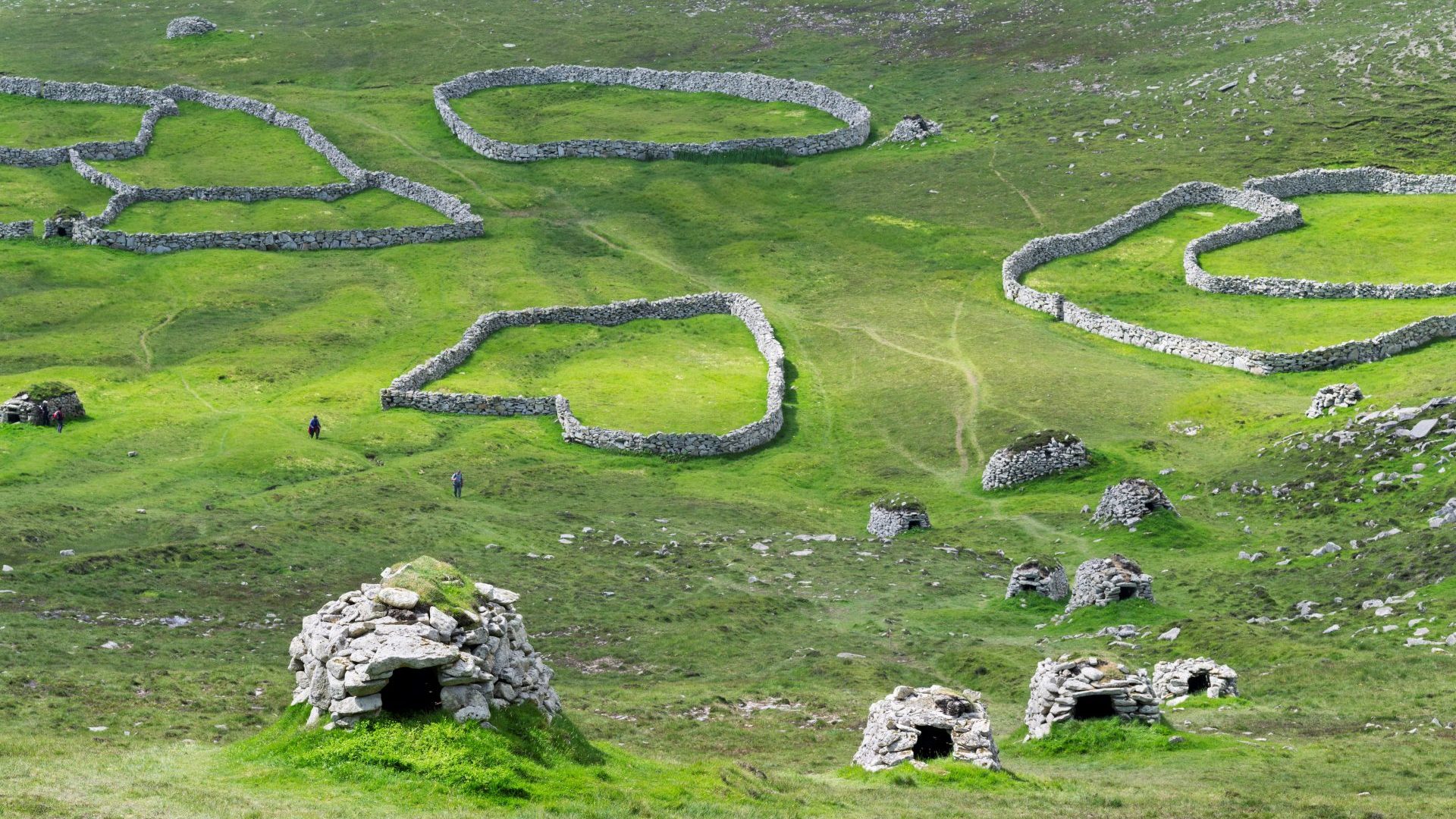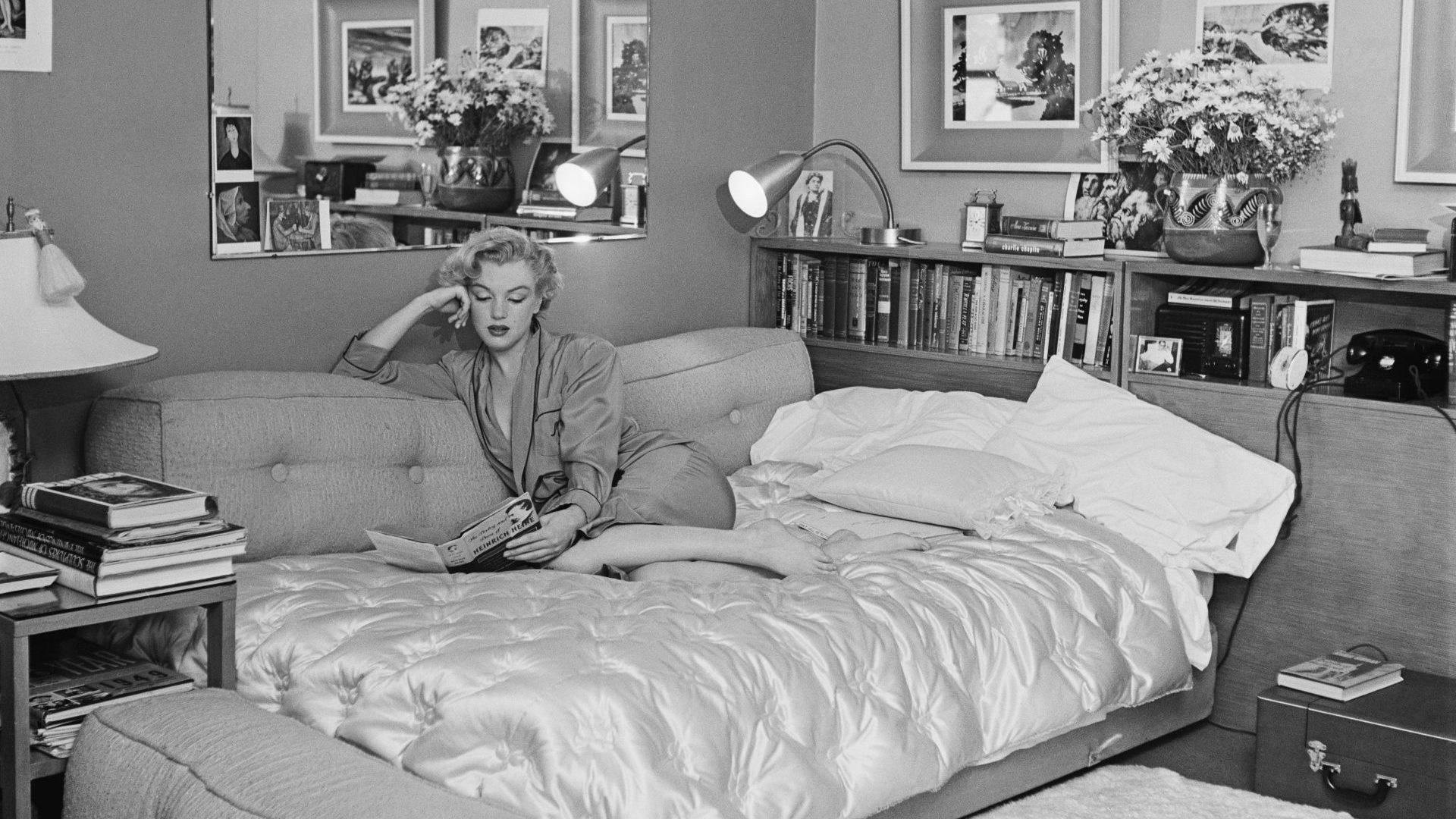It’s less than a century since the island of Hirta, nearly 50 miles west of the
Outer Hebrides, was evacuated and its 30 remaining inhabitants resettled on
the Morvern peninsula, opposite the Isle of Mull.
Yet our understanding of the curious landscape they left behind in the St Kilda archipelago is so sketchy that it might just as well have been a thousand years ago.
“All the books – and there are many – are focused on the last little bit of human habitation,” bemoans Susan Bain, Western Isles manager with the
National Trust for Scotland, which owns the islands. “What I and the trust
would like to do is show that people lived on the islands for thousands of
years and we don’t want the account to be dominated by those final years
leading up to the evacuation.”
The most visible legacy of the population who eked a living by scaling the towering cliffs to catch seabirds and take their eggs is about 1,400 simply-built dry stone shelters, called cleits. About 1,200 of them are on Hirta. They punctuate the entire landscape, from the old settlement of Village Bay all the way to the skyline.
Some are thought to date back hundreds, even thousands, of years and yet, confesses Bain, no one knows for sure the precise purpose of the structures, which are the most dominant feature of the human landscape created by successive communities. Nor do we know for sure whether the last St Kildans’ origins were predominantly Norse or Celtic – some archaeological evidence points to even earlier human occupation, in the Iron Age or possibly before.
St Kilda is designated a double World Heritage Site by Unesco, being listed for both its scenery and wildlife and for its “cultural landscape”, of which the cleits are an important element. The frustration shared by Bain and other archaeologists is that no one thought to ask those most likely to have the answers to the islands’ mysteries while they were still alive. The last surviving evacuee, Rachel Johnson, died as recently as 2016. She was 93, having been evacuated when she was eight.
“Although the evacuees were interviewed, perhaps in the 1960s, I don’t think people thought to ask about details, like the use of the cleits, and so frustratingly that knowledge may have died out within living memory,” Bain says.
Nor is there any DNA evidence that might have settled the question as to whether the islanders shared a Viking heritage with the Faroe Islands, 250
miles to the north, or if their roots were more Celtic in nature. If only there had been a latter-day Martin Martin who might have shared the 17th-century adventurer’s lust for Hebridean knowledge.
Martin was a native Gaelic speaker from the Isle of Skye who dedicated himself to creating an account of the society, culture and natural history of
the Western Isles. He visited St Kilda with the cartographer John Adair in
1697 and recorded what he found in A Late Voyage to St Kilda, published
the following year.
“What we think about the cleits is that they were not all in use at the same time,” Bain tells me. “We know that they are quite old, because Martin Martin mentions them and, by the late 17th century, there must have been a
lot of them. We also know that some were being built into the earlier 20th
century, but we have to be very careful as we are not sure if they were using
them in the exact same way.”
Some uses may have been quite prosaic: “Everybody loves a shed and, particularly on an island, you don’t throw anything away, because you never know when it will come in useful and I suspect that would have been more true a hundred years ago. You would squirrel away any number of things and I think what it shows is that the St Kildans were very good at living in that landscape and knew that they would have to store a lot for the winter months.
“The bigger cleits, near the village, are probably used for things like fodder, tools and vegetables like turnips and potatoes. The ones further out probably had a more localised use such as storing the equipment for harvesting the birds.”
There is no evidence, says Bain, that anything was used to plug the gaps between the stones and make the structures weathertight, raising the possibility that some may have been used for wind-drying bird and sheep
meat, the loose stone structures permitting the wind to blow through.
And then there are the more recent structures attributable to the changes
effected by the Rev Neil Mackenzie, a Church of Scotland minister, who introduced the distinctive enclosures around the village. “They either really
respected him or feared him,” says Bain. “They changed their agricultural
practices and enclosed land.” The large ‘head dyke’ was built to keep sheep and cattle out in summer so crops could be grown, and then the animals would be allowed in to shelter and eat fodder in winter. The dyke followed the crescent of the new ‘black houses’ at Village Bay, which replaced the much earlier settlement further up the hillside. These in turn were replaced by the Laird [landlord] 30 or so years later after a big storm. Some now house those doing seasonal work on the island and feature turf roofs laid on top of earthen mounds, which in turn sit atop a flat structure of stone flags spanning the house walls.
A modest number of archaeological finds have shone a faint light on the islands’ earlier history, says Bain. “There were a couple of brooches found in 19th-century excavations – they are very much associated with the burial of Viking women.” Most of the islands’ place names are Norse in origin, she adds.
A souterrain [stone-lined tunnel], typical of others found in the Western Isles, is all that remains of an Iron Age house, while the footprints of even
older buildings hint at Bronze Age and late Neolithic settlement. In 2011, the
remains of an early field system were found on the precipitous but guano-rich slopes of the neighbouring island of Boreray, where a handful of cleits hint at summer settlement during the bird-gathering season, and a circle of “Druidic” altars was reportedly found in the 18th century.
It is the feral Soay sheep, however, that hold clues to the very earliest settlement: “We think they are unchanged for three or four thousand years,” says Bain. Other unusual residents include the “giant” St Kilda wrens and field mice, while even the male humans apparently evolved larger and more muscular feet through centuries of scaling the cliffs on ropes.
I bumped into Jill Pilkington, head of the Soay Sheep Project, a long-term
study aimed at gaining a better understanding of their modern, domesticated descendants.
Pilkington studies animal parasites and is the nearest St Kilda has to a permanent resident, having studied her flock for more than 30 years. Her
“second home” is in Hexham, Northumberland, where she has, she says, a husband. I reflect that hers must be an unusual kind of marriage. “Yes,” she muses. “If I’ve been on home leave for six weeks, my husband starts to ask ‘When are you going back to that island of yours?’.”
Besides Pilkington and Bain, about eight Ministry of Defence contractors
track missiles launched from Uist, 50 miles to the east. In summer, National
Trust staff and volunteers can swell numbers to more than 30 all told: as many as left the island for the last time in 1930.
My visit demanded careful planning, waiting for a period of sustained high
pressure and camping on the shore of Harris before taking the boat through
the swell. I looked down on the cleits and enclosures from near the summit,
across the caldera of the ancient volcano, enclosing a turquoise blue lagoon: for a curious moment it seemed more like a deserted version of Santorini than the wild Atlantic, and I could sense the lure that the place continues to exert so many years after it was abandoned.
Bain has been coming here for 20 years and puts it like this: “It’s a very strange thing – it’s a very small island, tiny even, and yet there are bits I have never been to and so it’s huge, too. And every time I go to the cliff edge, I say ‘I am not going to take a picture of Boreray again’. But I always do, because of the way it’s different every time. And when the birds leave in August, it’s so quiet and you get a real sense of what the St Kildans must have felt like.”
Stan Abbott is a non-fiction author. His latest book, Ring of Stone Circles:
Exploring Neolithic Cumbria, is out now, priced £9.99, published by Saraband



